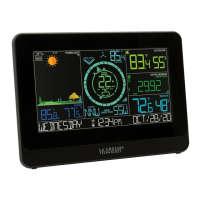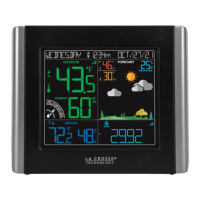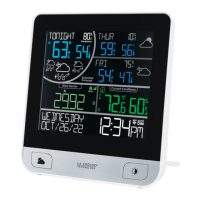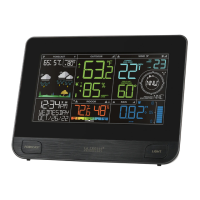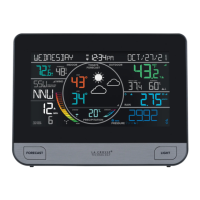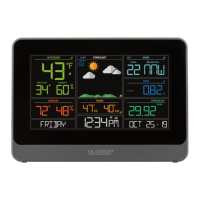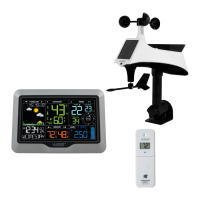5 | Page
• Use the included mounting bracket or your own mounting pole (no more than 1 inch outer
diameter to fit). Secure to the sensor with screws provided. Tighten the screws to snug (do
not over tighten).
• Solar panel must face South to provide correct Wind Direction.
• General Wind Sensor mounting video: http://bit.ly/wind_sensor_mounting
WHERE TO I PLACE MY STATION?
Your station is designed for flexible placement on a desk or countertop, or to position on the
wall. When the stand is closed, it provides wall mounting holes.
• Position within reach of an outlet that is always active. Some outlets in living rooms and in
bedrooms may only be active when the light switch is on.
• This station must operate with the 5 volt power cord in order to receive sensor updates
and/or to update Wi-Fi data when connected. Operation on battery power will only maintain
time/date settings if you need to move your station.
• Best reception occurs when only one wall is between your station and each sensor outside.
• Position you station six feet from other electronics and wireless devices. If you suspect RF
(radio frequency) interference, simply move your weather station a few feet.
WHAT IS DISTANCE | RESISTANCE | INTERFERENCE?
Distance:
• The maximum transmitting range in open air is over 400 feet (121.92 meters) between each
sensor and your station.
• Consider the signal path from your station to each sensor as a straight line.
• Consider the distance the station is from other electronics in the home.
Resistance:
• Each obstacle: walls, windows, vegetation, stucco, concrete, and large metal objects will
reduce the effective signal range by about one-half.
• Mounting your sensors on a metal fence can significantly reduce the effective signal range.
Interference:
• Consider electronics in the signal path between the sensors and your station.
• Simple relocation of the sensors or the station may correct an interference issue.
• Windows can reflect the radio signal.
• Metal will absorb the RF (radio frequency) signal.
• Stucco held to the wall by a metal mesh will cause interference.
• Transmitting antennas from: ham radios, emergency dispatch centers, airports, military
bases, etc. may cause interference.
• Electrical wires, utilities, cables, etc. may create interference if too close.

